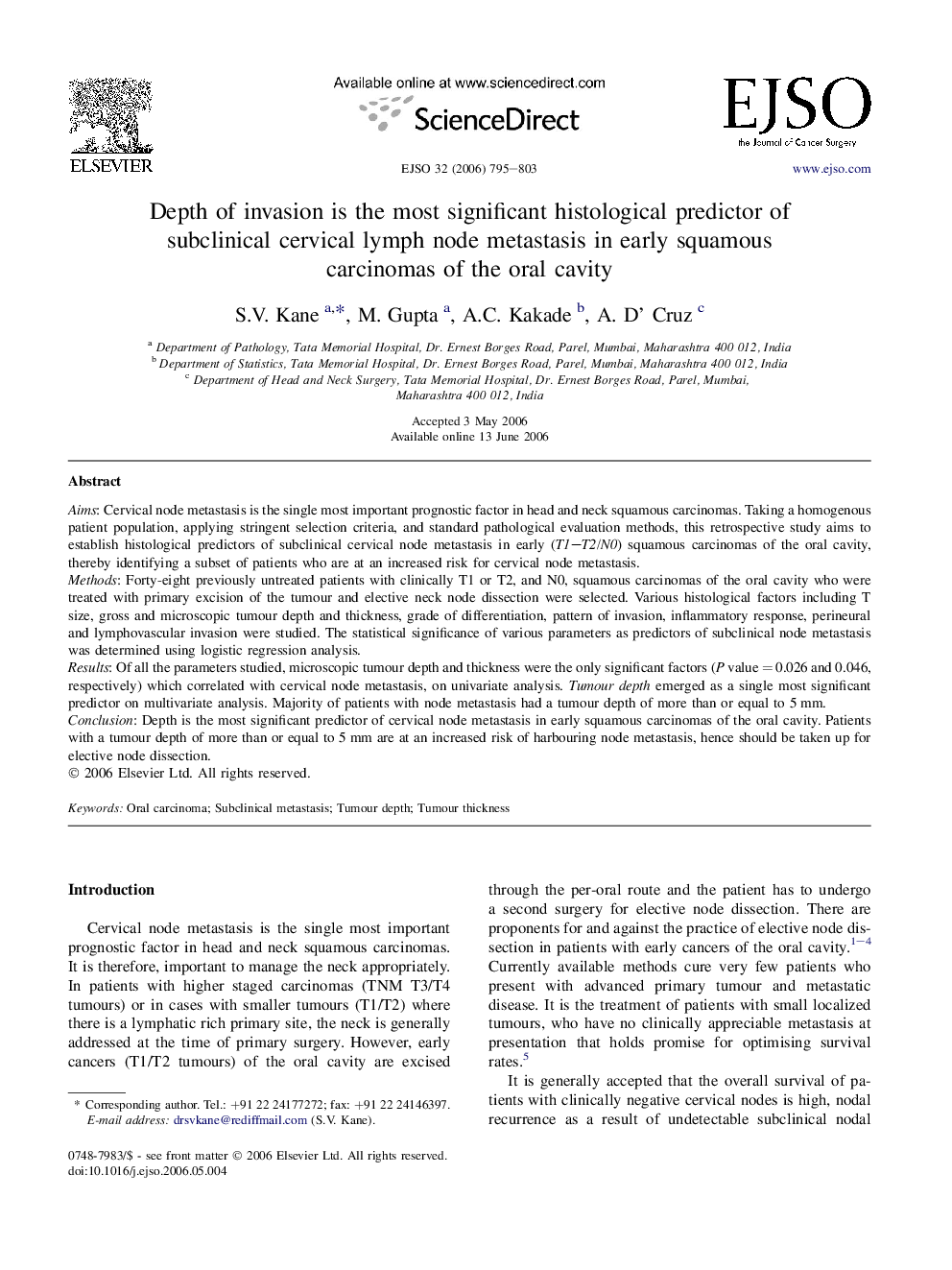| Article ID | Journal | Published Year | Pages | File Type |
|---|---|---|---|---|
| 3988432 | European Journal of Surgical Oncology (EJSO) | 2006 | 9 Pages |
AimsCervical node metastasis is the single most important prognostic factor in head and neck squamous carcinomas. Taking a homogenous patient population, applying stringent selection criteria, and standard pathological evaluation methods, this retrospective study aims to establish histological predictors of subclinical cervical node metastasis in early (T1–T2/N0) squamous carcinomas of the oral cavity, thereby identifying a subset of patients who are at an increased risk for cervical node metastasis.MethodsForty-eight previously untreated patients with clinically T1 or T2, and N0, squamous carcinomas of the oral cavity who were treated with primary excision of the tumour and elective neck node dissection were selected. Various histological factors including T size, gross and microscopic tumour depth and thickness, grade of differentiation, pattern of invasion, inflammatory response, perineural and lymphovascular invasion were studied. The statistical significance of various parameters as predictors of subclinical node metastasis was determined using logistic regression analysis.ResultsOf all the parameters studied, microscopic tumour depth and thickness were the only significant factors (P value = 0.026 and 0.046, respectively) which correlated with cervical node metastasis, on univariate analysis. Tumour depth emerged as a single most significant predictor on multivariate analysis. Majority of patients with node metastasis had a tumour depth of more than or equal to 5 mm.ConclusionDepth is the most significant predictor of cervical node metastasis in early squamous carcinomas of the oral cavity. Patients with a tumour depth of more than or equal to 5 mm are at an increased risk of harbouring node metastasis, hence should be taken up for elective node dissection.
